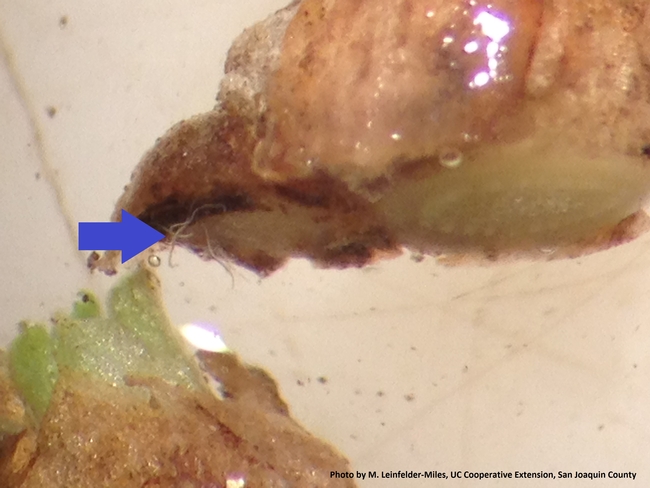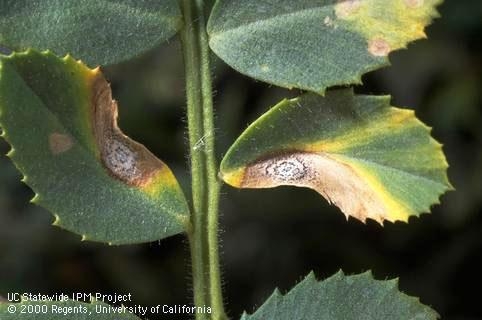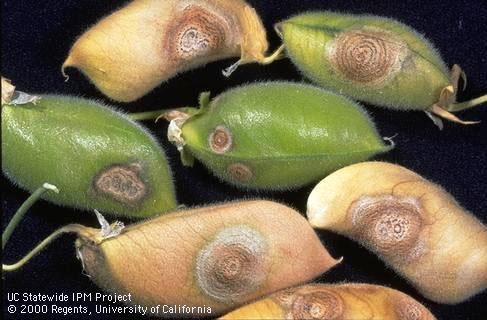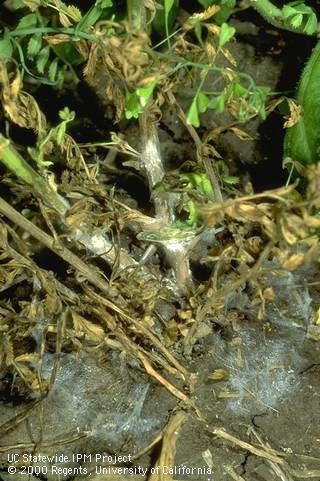- Author: Michelle Leinfelder-Miles


In addition to the production manuals previously mentioned, I also consulted UC production manuals produced in the 1950's, including Dry Edible Bean Production in California (1954), Blackeyes: Costs of Production, Suggestions on Growing (1956), and Production of Dry Edible Lima Beans in California (~1951).
- Author: Michelle Leinfelder-Miles
The UC Davis Department of Plant Sciences has announced their field day for small grains and alfalfa. The event will take place on Wednesday, May 11, 2016 from 8:15am to 4:15pm. The small grains field day will take place in the morning, and the alfalfa field day will take place in the afternoon. Lunch will be provided, and there is no registration fee.
The field day is located on Hutchison Road, just west of the city of Davis. Take Highway 113 north from Interstate 80, or take Highway 113 south from Woodland. Exit on Hutchison Road, and go west. Take a right at the first roundabout, left at the second roundabout, and the Agronomy Headquarters is about ¼ mile west in a clump of trees and buildings on your left.
A tentative agenda is as follows:
8:15am – Noon: Small Grains Field Day
7:45 Registration (no charge)
8:15 Welcome and Introductions—Mark Lundy, UCCE/UCD Grain Specialist
8:20 Overview of wheat breeding—Jorge Dubcovsky, UCD wheat breeder
8:25 Introducing new California Wheat Commission Executive Director Deanna Fernandez
8:35 Depart for field
Field Tour:
8:50 – 10:50 Advances and directions in small grain breeding
8:50 Promising malting barley varieties —Alicia del Blanco, UC Davis
9:05 Durum Wheat Varieties: new genes for grain yield—Alicia del Blanco, UC Davis
9:15 Promising common wheat releases—Oswaldo Chicaiza, UC Davis
9:30 Evaluation of high resistant starch wheat lines—Andre Schönhofen, UC Davis
9:45 QTL for increased number of spikelets— Junli Zhang and Saarah Kuzay, UC Davis
10:00 Discovering genes for drought tolerance—Tyson Howell, UC Davis
10:15 Combining two stripe rust resistance genes in a single locus—Nicolas Cobo, UC Davis
10:30 Mutants for stripe rust resistance—Josh Hegarty, UC Davis
10:45 Travel to forage trial
10:55 – 11:55: Variety testing and agronomic management of small grain crops
10:55 Small grain forage variety evaluation—Cal Qualset & Lynn Gallagher, UC Davis
11:10 Statewide Variety Development and Evaluation – Wheat, Triticale, and Barley Yields, Performance and Pest Resistance—Mark Lundy & Phil Mayo, UC Davis
11:40 Demonstration of in-field N monitoring & quicktests for improved precision of N fertilization—Jessica Schweiger, UC Davis
11:50 Late-planted heirloom varieties at different seeding rates—Margaret Lloyd, UCCE
12:00 NOON – Barbeque Lunch – Many thanks to California Crop Improvement for the Complementary Lunch!
12:35pm - 4:15pm: Alfalfa/Forages Field Day
12:35 Introductions—Dan Putnam, UCCE/UCD Alfalfa Specialist
12:40 Welcome, Department of Plant Sciences—Chris Van Kessel, Chair
12:50 Welcome from the Dean-Changes at UC Davis in Agriculture—Dean Helene Dillard, Dean College of Agriculture and Environmental Sciences, UC Davis.
1:00 Depart for field
Field Tour:
1:05 Insect Management and Disappearing Options for Alfalfa—Larry Godfrey, UC Davis and Rachael Long, UCCE
1:20 Measuring Evapotranspiration (ET) in the Field – Ali Montazar, Project Scientist, UC Davis
1:35 Using ET to schedule irrigations – How to—Daniele Zaccharia, Irrigation Specialist, UC Davis.
1:50 Sorghum Field Studies for Grain and Forage Crops—Jeff Dalberg, Kearney Ag. Center, Fresno, CA
2:05 Field Studies with New Weed Management Options—Mick Canevari, UCCE, San Joaquin County
2:25 Kura Clover, an alternative Clover for Pastures—Dan Putnam, UC Davis
2:35 Subsurface Drip Irrigation Studies on Spacing—Dan Putnam, Daniele Zaccaria, UC Davis
2:50 Deficit Irrigation Strategies for Alfalfa—James Radavich, Dan Putnam, Ali Montazar, UC Davis
3:05 Controlling Gophers in Alfalfa Fields—Roger Baldwin, UC Davis
3:20 Understanding the Fertilizer Needs of Alfalfa—Steve Orloff, UCCE Farm Advisor, Siskiyou County
3:35 Variety Performance Data for Managing Diseases, Insects, and Nematodes, UC Davis—Dan Putnam, UC Davis
3:50 Breeding Alfalfa for California—Scott Newell, Gitanshu Munjal, Charlie Brummer, UC Davis
4:15 Return to Base
- Author: Michelle Leinfelder-Miles


Nematodes are microscopic roundworms that use their stylet, or needle-like mouthpart, to puncture plant cells and suck out their contents. The alfalfa stem nematode lives and feeds in the stems and crown of the plant. Symptoms of infection include plant stunting, shortened internodes, and swollen buds (Figure 1), and white flagging where stems lack chlorophyll (Figure 2). Identification of stem nematode can be done under a dissecting microscope by cutting pieces of stems and the crown in a petri dish with water. I took this picture using my smartphone through the eyepiece of the microscope (Figure 3). The stem nematodes are indicated with the blue arrow; they are the almost-translucent wiggly lines emerging from the piece of stem.
Stem nematodes can be a perennial problem in California alfalfa. (See a previous article on the UC Alfalfa and Forage News blog.) They are a particular problem in the spring when the weather is cooler. As temperatures warm, the nematodes recede to the soil and go dormant until cool weather returns. They can cause complete plant die-back, leaving open areas in the field where weeds can become a problem. Unfortunately, management of this pest is challenging. Varieties have varying levels of resistance, but even with a highly-resistant variety, it can be typical to have susceptible plants next to healthy plants within a stand. For this reason, in an area where stem nematodes are a problem, a grower should plant nothing less than a highly-resistant variety. It is important to plant clean seed. Using proper sanitation methods is also advised and would include not moving equipment and wastewater from infected to clean fields, and also not applying manure from cattle fed with infected stem nematode hay to clean fields. Stem nematodes have a limited host range, so rotating out of alfalfa for at least 2 years can help to reduce the problem, but longer rotations (4 years) might be advised under severe infestations. Rotation crops could include small grains, corn, or dry beans. There are no registered nematicides for stem nematode.
- Author: Michelle Leinfelder-Miles
- Author: Rachael Long
A pest control advisor recently contacted us to ask what pests he should be scouting for in garbanzo beans. His clients had not grown garbanzos in the past but have some acreage this year. Given recent wet weather and relatively mild temperatures, there are three diseases for which we suggest keeping an eye out.



Lastly, white mold (Sclerotinia sclerotiorum and S. trifoliorum) may be a problem in garbanzos this year, like Ascochyta blight, because of the wet conditions. White mold may appear as a watery rot on stems, leaves, and pods. 
Information on products and practices is for educational purposes only and does not constitute an endorsement or recommendation by the University of California.
- Author: Michelle Leinfelder-Miles
Growers are invited to attend a focus group meeting to discuss conservation agriculture and wildlife friendly farming in the Delta. The meeting is jointly organized by Audubon California, CA Department of Water Resources (DWR), and University of CA Cooperative Extension. Steven Garcia, with DWR, will talk about a pilot project on Twitchell Island, and open discussion will follow the presentation. Grower feedback is highly valued and will provide direction for the project.
The meeting will be held on Thursday, February 25, 2016 from 9:00-11:00am at the Robert J. Cabral Agricultural Center (2101 E. Earhart Ave., Stockton, CA 95206). Mark your calendars, and please RSVP to Michelle Leinfelder-Miles (209-953-6100 or mmleinfeldermiles@ucanr.edu) by February 22nd. Light refreshments will be provided.
Agenda and Discussion Topics
1.) Introduction of meeting participants
2.) Presentation: “Conservation Farming Practices to Minimize Subsidence of Peat Soils in the Delta”: Steven Garcia, DWR
3.) Group Discussion Guiding Questions:
a. Are you incorporating conservation farming/wildlife friendly practices on your land? What practices and why?
b. What are the benefits, drawbacks, or uncertainties of conservation agriculture practices?
c. What conservation agriculture practices would you like to see tested in the Delta? What would be the biggest challenges?
4.) Future project plans



